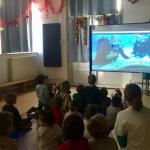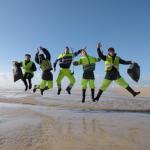Educational project
Intended for: Children in elementary school from 1st to 5th grade
Objectives
- Raise awareness among young people about the presence of pollution along the coast and in nature.
- Learn to identify the different types of waste, their origin (source), and their fate in nature (impact).
- Understand how this waste is toxic for the fauna and flora.
- Adopt an eco-citizen attitude, at your own scale, to limit marine pollution: clean-up activities, recycling, and solutions to limit waste production (new behaviors).
- Become an actor in collaborative activities and/or participatory science: use a digital application to transmit information from field observations.
Actions
- Provision of an educational kit for cycles 1,2 and 3
Made available for the associations Mer-Terre and GEOM, within the framework of the Sea Network of the PACA Region.
A panel of fun activities adapted by grade, to raise awareness among children about the protection of the marine environment. http://geom-asso.com/?page_id=215
Cycle 2. Questioning the World: Living, matter, object
Learn about the characteristics, interactions and diversity of the living world.
- Identify the interactions of living organisms among themselves and with their environment.
- Become aware of the diversity of living organisms present in an environment and their inter-dependence.
- Understand the notion of food relations between living organisms.
Take charge of aspects of community life and the environment, and develop civic, social and ecological awareness.
- Gradually get involved in collective life at different levels.
- Cooperate towards a common goal.
Moral and civic education
- Cooperate towards a common goal.
Cycle 3: Science and technology
Describe the states and constitution of matter on a macroscopic scale
- Understand the diversity of matter: metals, minerals, glass, plastics, organic matter in various forms, etc.
Identify the main families of materials
- Identify families of materials (distinction of materials based on shape, function and process)
- Understand their environmental impact
Diversity and functions that characterize living organisms
- Describe how living organisms develop and become able to reproduce.
- Explain the origin of organic matter in living organisms and its fate.
- Identify environmental issues: Distribution of living organisms and their habitats.
- Understand how living organisms interact among themselves and with their environment.
- Link the organisms in a given habitat and the living conditions.
- Identify some human impacts in an environment (development, technological impact, etc.)
- Follow and describe the fate of some materials in the immediate environment.



